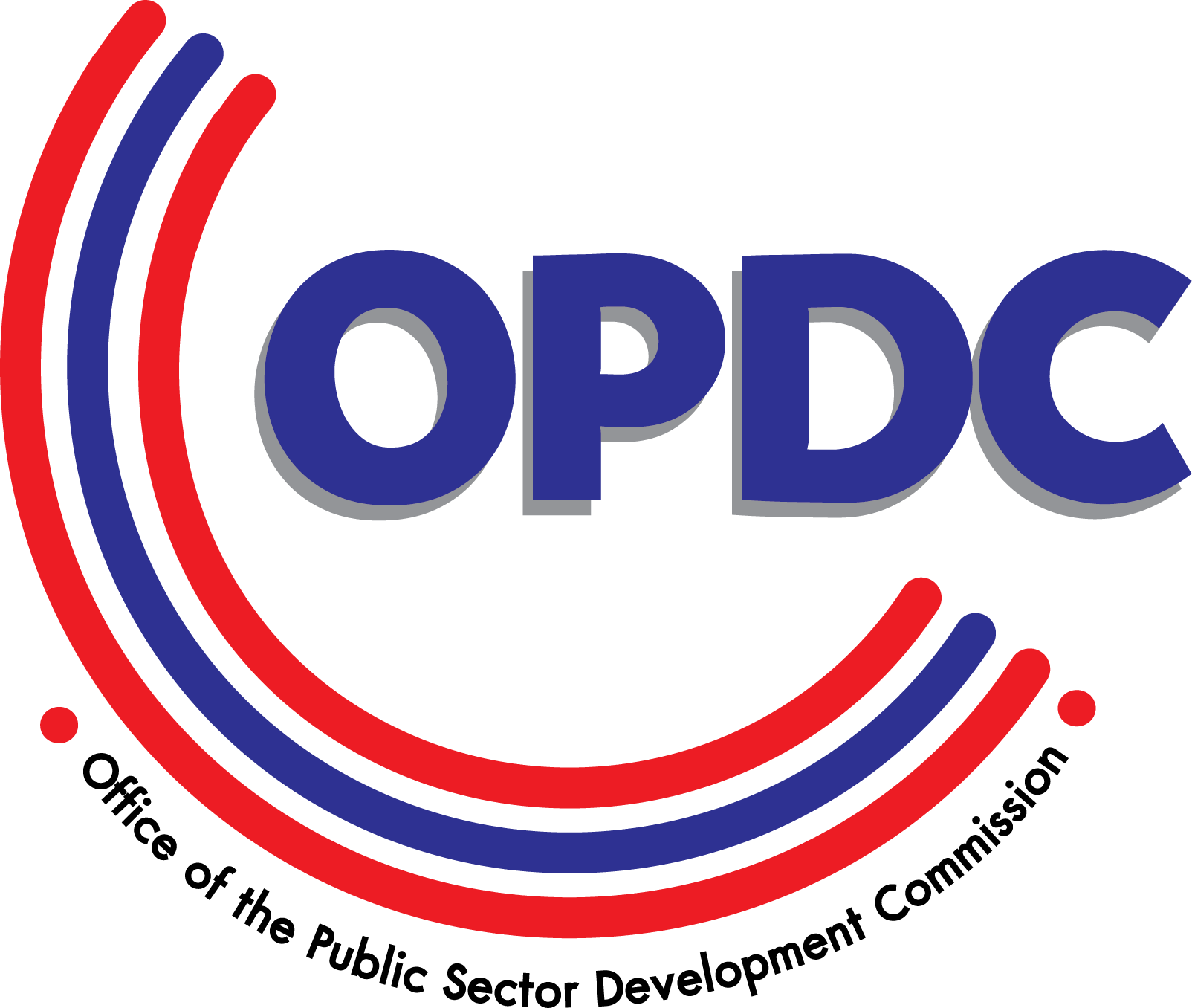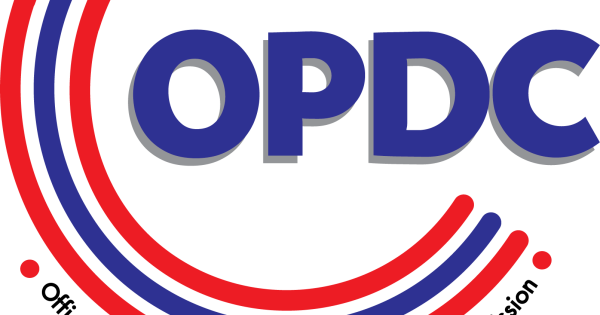Vision
” Develop the bureaucratic system according to good governance principles to achieve tangible results for better quality of life of people and sustainable national development “
Mission
The Office of Public Sector Development Commission (OPDC) has missions related to studying, analyzing, recommending policies, and providing consultation on public sector development to the Cabinet, government agencies, and other state organizations. This is to ensure that the bureaucratic system remains strong, modern, and aligned with new public management approaches that emphasize results-based management. The duties and authorities are as follows:
1. Act as officials regarding operations under the Public Sector Development Commission (PDC)’s duties and carry out tasks assigned by PDC
2. Be responsible for administrative and academic work of the Public Organization Development and Promotion Committee and carry out tasks assigned by the committee
3. Study, analyze, and provide opinions regarding government agency division and determination of duties and authorities of government agencies, as well as monitor compliance with the State Administration Act
4. Explain, create understanding, provide guidance, and conduct training regarding public sector development as assigned by PDC
5. Implement, monitor, and evaluate compliance with the State Administration Act, the Improvement of Ministries and Departments Act, the Licensing Facilitation Act, and other relevant laws to report to PDC
6. Prepare annual reports on public sector development and organization and other state affairs to present to PDC for submission to the Cabinet, House of Representatives, and Senate
7. Perform other duties as prescribed by law to be duties and authorities of the office or as assigned by the Prime Minister or the Cabinet
Strategic Issues and Objectives
Strategic Issue 1 : Developing Citizen-Centric Public Service Innovation
Objective : Promote and develop excellent public service systems in Thai government agencies, enhance service efficiency, develop innovations that are easily accessible, convenient, cost-effective, and diverse to meet citizens’ needs.
Strategy 1.1 : Develop convenient, fast, cost-effective public services that address citizens’ needs
Strategy 1.2 : Enhance capabilities in information collection and connection for public services
Strategy 1.3 : Promote service innovation development in government agencies
Strategic Issue 2 : Developing Public Sector Structure and Management Systems to be Appropriately Sized, Agile, and High-Performing Using Digital Technology
Objective : Improve roles, missions, and structures of government agencies to align with national policies and strategies, focusing on essential, necessary, and worthwhile missions with appropriate, flexible, agile structures, and develop high-performing management systems using digital technology.
Strategy 2.1 : Improve and develop compact government structures suitable for missions, flexible and adaptable to change
Strategy 2.2 : Develop new administrative models, approaches, and roles for high-achieving government agencies
Strategy 2.3 : Develop proactive and forward-looking operational models with advance planning and risk analysis
Strategy 2.4 : Promote organizational management innovation in government agencies
Strategy 2.5 : Develop comprehensive digital technology systems for public administration
Strategy 2.6 : Recruit and develop high-performing new generation leaders for change
Strategy 2.7 : Review and improve laws relating to public administration to match changing circumstances
Strategy 2.8 : Strengthen and develop public sector development network capabilities
Strategic Issue 3 : Developing an Open, Connected, Integrated Public System with Participation from Citizens and All Stakeholders
Objective : Develop integrated administration between central, regional, and local levels using area-based holistic approach with all sectors through civil state mechanism, design structures and systems supporting national strategic drives, ensure transparency with external access to government information and mutual data sharing, and allow public scrutiny.
Strategy 3.1 : Establish a planning and policy-making system for government measures that enables citizens, the private sector, and relevant stakeholders to participate in a Pracharath-style public administration, emphasizing a citizen-centered approach.
Strategy 3.2 : Promote transfer of non-essential government functions to other sectors
Strategy 3.3 : Establish integrated and proactive administration systems
Strategy 3.4 : Establish transparent working systems with public access to information
Strategy 3.5 : Promote standardized and secure data integration across government agencies
Strategy 3.6 : Enhance efficiency and harmonize internal government operations to ensure unity and coordination across central, regional, and local administrations
Strategy 3.7 : Develop public sector evaluation systems by citizens and real stakeholders
Strategic Issue 4 : Promoting Good Governance in Public Sector
Objective : Promote integrity in bureaucratic system, improve transparent government processes, reduce official discretion to build positive image and trust in Thai bureaucracy.
Strategy 4.1 : Create sustainable good governance systems in government agencies
Strategy 4.2 : Build awareness and consciousness about anti-corruption for transparent public administration
Strategic Issue 5 : Developing OPDC to be a High-Performance, Agile, and Fully Digital Organization
Objective : To develop working models and processes, establish an IT infrastructure for internal operations at OPDC, and develop personnel competencies that align with changes in the digital disruption era, enabling them to effectively provide consultation to other government agencies for public sector development.
Strategy 5.1 : Review and improve OPDC’s internal systems and processes to align with missions, technology, and efficiency.
Strategy 5.2 : Develop modern digital technology systems for OPDC operations to be contemporary, swift, efficient, and responsive to staff needs.
Strategy 5.3 : Develop an information storage system for operations and administration using appropriate and secure digital technology.
Strategy 5.4 : Develop organizational management systems and operational models to be agile, swift, efficient, and results oriented.
Strategy 5.5 : Develop OPDC’s human resource management and development systems to align with work processes, serving as a key mechanism in driving OPDC’s strategic agenda.


